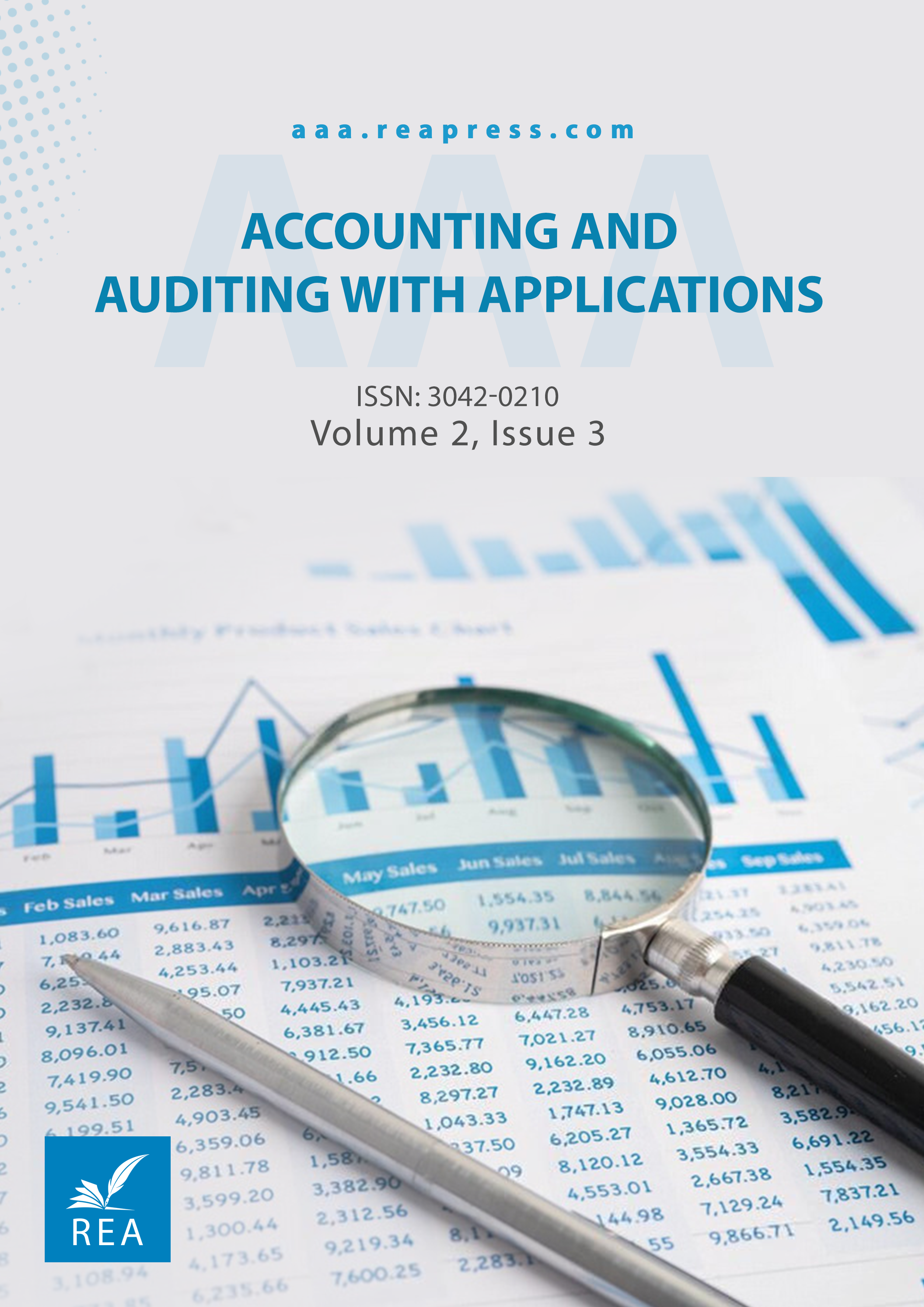Investigation of the Effect of Board Compensation and CEO Power on Firms’ Innovation with the Moderating Role of Ownership Structure
Abstract
The present study examines the effect of board compensation and CEO power on Firms’ innovation with the moderating role of ownership structure based on data envelopment analysis. The statistical population of the study includes all companies listed on the Tehran Stock Exchange, which after sampling amounted to 143 companies and over a 10-year period from 2012 to 2021. The hypothesis testing method in the present study was the use of multiple ordinary regression using R software. The results of the study show that there is a significant relationship between board compensation and firms’ innovation. There is also a significant relationship between CEO power and firms’ innovation. Ownership structure does not moderate the relationship between board compensation and firms’ innovation, and finally, ownership structure does not moderate the relationship between CEO power and firms’ innovation.
Keywords:
Board Compensation, CEO Power, Firms’ Innovation, Ownership StructureReferences
- [1] Zulfiqar, M., & Hussain, K. (2020). Ceo compensation and firm innovation: Moderating role of ownership concentration. International journal of innovation management, 24(06), 2050058. https://doi.org/10.1142/S1363919620500589
- [2] Mazouz, K., & Zhao, Y. (2019). CEO incentives, takeover protection and corporate innovation. British journal of management, 30(2), 494–515. https://doi.org/10.1111/1467-8551.12330
- [3] Kostyuk, A., Guedes, M. J. C., Govorun, D., & Huryna, M. K. (2020). Corporate governance: Examining key challenges and perspectives [presentation]. Conference proceedings. International online conference. https://doi. org/10.22495/cgekcp.
- [4] Lee, M. G., & Kim, J. S. (2019). The effects of corporate governance on CEO compensation. Journal of derivatives and quantitative studies, 27(2), 165–191. https://doi.org/10.1108/JDQS-02-2019-B0002%0A%0A
- [5] Akram, H., Azam, N., Farooq, M. U., Ahad, A., & Saadat, U. (2022). Impact of CEO compensation and CEO power on firmsâ€TM innovation moderating role of ownership structure. Jurnal aplikasi manajemen, ekonomi dan bisnis, 6(2), 61–73. https://doi.org/10.51263/jameb.v6i2.146
- [6] Diantai Deilami, Z., Moradzade Fard, M., & Mazaheri, A. (2013). The effect of management tenure on firm value, agency costs, and the database. Empirical research in accounting, 3(3), 21–39. https://doi.org/10.22051/jera.2013.587
- [7] Finkelstein, S. (1992). Power in top management teams: Dimensions, measurement, and validation. Academy of management journal, 35(3), 505–538. https://doi.org/10.2307/256485
- [8] Linder, J. C., Jarvenpaa, S., & Davenport, T. H. (2003). Toward an innovation sourcing strategy. MIT Sloan Management Review. https://sloanreview.mit.edu/article/toward-an-innovation-sourcing-strategy/
- [9] Towfiq, A. A. (1999). Management of research and development units in production units. The second conference of research and development centers for industries and mines. Civilica. (In Persian). https://civilica.com/doc/21626
- [10] Shahyakitash, M. N., Kazemi, M., & Amini, M. (2012). A Study of the Relationship between Ownership Structure and Performance of Listed Companies in Tehran Stock Exchange. 2, 12(9), 5–24. (In Persian). https://ejip.ir/article-1-476-en.html
- [11] Roe, M. J. (1990). Political and legal restraints on ownership and control of public companies. Journal of financial economics, 27(1), 7–41. https://doi.org/10.1016/0304-405X(90)90019-V
- [12] Rezaei pitenoei, Y., Safari gerayli, M., & Gholamrezapoor, M. (2019). Research paper: Management overconfidence and research and development costs. Financial management strategy, 7(3), 157–173. (In Persian). https://doi.org/10.22051/jfm.2018.21247.1728
- [13] Keshavarz, Z., & Kiamehr, M. (2018). Investigating the effects of financial constraints and agency costs on investment in research and development. The third international conference on dynamic management, accounting and auditing. (In Persian). Civilica. https://civilica.com/doc/826439
- [14] Turkashavand, S., Hosseini, S. R., & Khatiri, M. (2017). The relationship between financing sources ratios and research and development cost intensity in companies listed on the tehran stock exchange. The 8th international conference on accounting and management with a modern research science approach. (In Persian) Civilica. https://civilica.com/doc/771594
- [15] Ghasemi, G., & Asiai, F. (2017). Free cash flow and investment opportunity portfolio. The third annual conference on business management and economics. (In Persian). Civilica. https://civilica.com/doc/743370
- [16] Molaei, M. A., & Dehghani, A. (2011). Evaluating the impact of research and development costs on market share in the Iranian industrial sector (nonlinear LSTAR approach). Economic growth and development research, 1(4), 50–55. (In Persian). https://elmnet.ir/doc/1155123-41052?elm_num=1
- [17] Chen, S., Ho, K., & Ho, P. (2014). CEO overconfidence and long‐term performance following R&D increases. Financial management, 43(2), 245–269. https://doi.org/10.1111/fima.12035
- [18] Zhu, Z., & Huang, W. (2014). Investor sentiment, chairman-ceo duality and R&D investment. Proceedings of picmet’14 conference: portland international center for management of engineering and technology; infrastructure and service integration (pp. 2583–2588). IEEE. https://ieeexplore.ieee.org/abstract/document/6921166
- [19] Chen, H. L. (2013). CEO tenure and R&D investment: The moderating effect of board capital. The journal of applied behavioral science, 49(4), 437–459. https://doi.org/10.1177/0021886313485129
- [20] Schopohl, L., Urquhart, A., & Zhang, H. (2021). Female CFOs, leverage and the moderating role of board diversity and CEO power. Journal of corporate finance, 71, 101858. https://doi.org/10.1016/j.jcorpfin.2020.101858
- [21] Imeni, M., & Daryaei, A. A. (2021). Managers’ certification: Further evidence of the role of safeguarding in financial reporting in the Iranian capital market. Journal of accounting knowledge, 12(4), 67–91. (In Persian). https://jak.uk.ac.ir/article_2944.html?lang=en
- [22] Choi, S. B., Lee, S. H., & Williams, C. (2011). Ownership and firm innovation in a transition economy: Evidence from China. Research policy, 40(3), 441–452. https://doi.org/10.1016/j.respol.2011.01.004
- [23] Amore, M. D., & Failla, V. (2020). Pay dispersion and executive behaviour: evidence from innovation. British journal of management, 31(3), 487–504. https://doi.org/10.1111/1467-8551.12337
- [24] Fang, L. H., Lerner, J., & Wu, C. (2017). Intellectual property rights protection, ownership, and innovation: evidence from China. The review of financial studies, 30(7), 2446–2477. https://doi.org/10.1093/rfs/hhx023
Downloads
Published
Issue
Section
Categories
License
Copyright (c) 2025 Accounting and Auditing with Applications

This work is licensed under a Creative Commons Attribution 4.0 International License.


